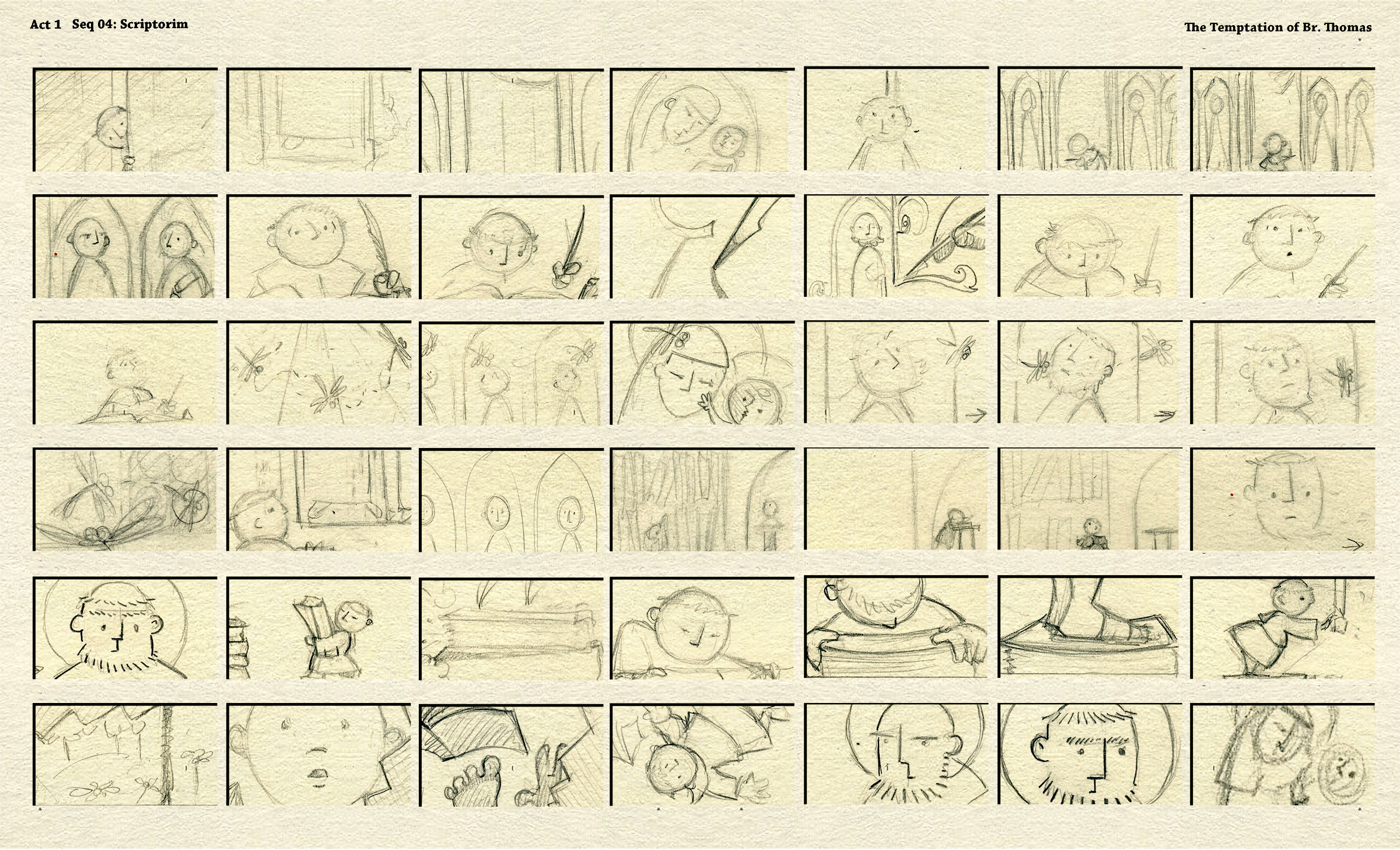ROUGH STORYBOARDS (Staging/Cinematography)
Once your story is firmly established it's time to construct each shot through the lens of your camera. This means staging your characters, setting up cameras and making clear deliniations between foreground, midground and background planes. Composition, camera placement, editorial transitions (dissolves, cuts, and fades) should all be taking shape. Most likely this means a number of revisions.
If you haven't already now would be a good time to start working digitally. Keep the drawings loose but legible breaking shot into layers (foreground, mid-ground and background). Begin with staging your characters, Using a map/plan view of your scene will help you determine the best stratagy for camera placement and character blocking (i.e. staging). Make sure you are working strictly within your final aspect ratio (HD or Standard Full Screen). Work as quickly as possible keeping in mind that clean lines, details, and tonal renderings come later.
